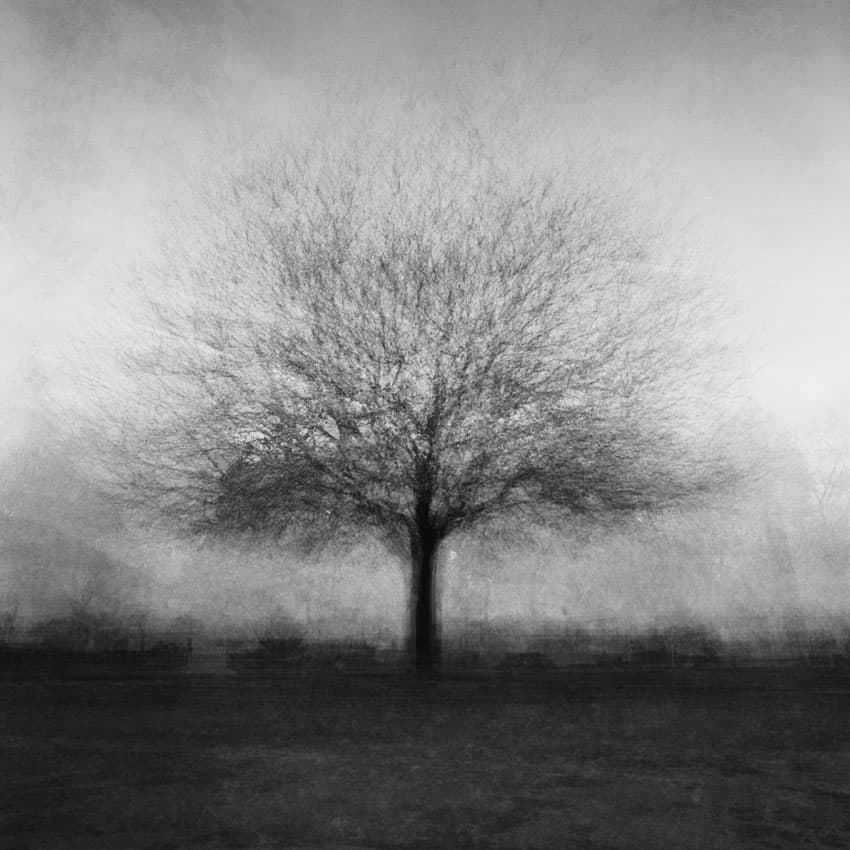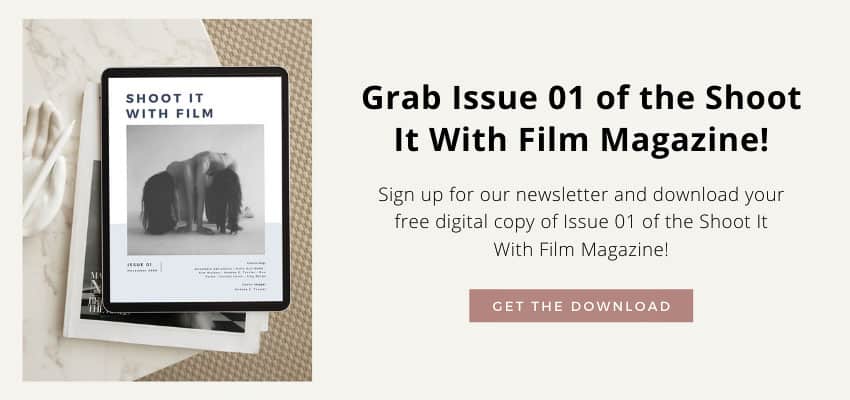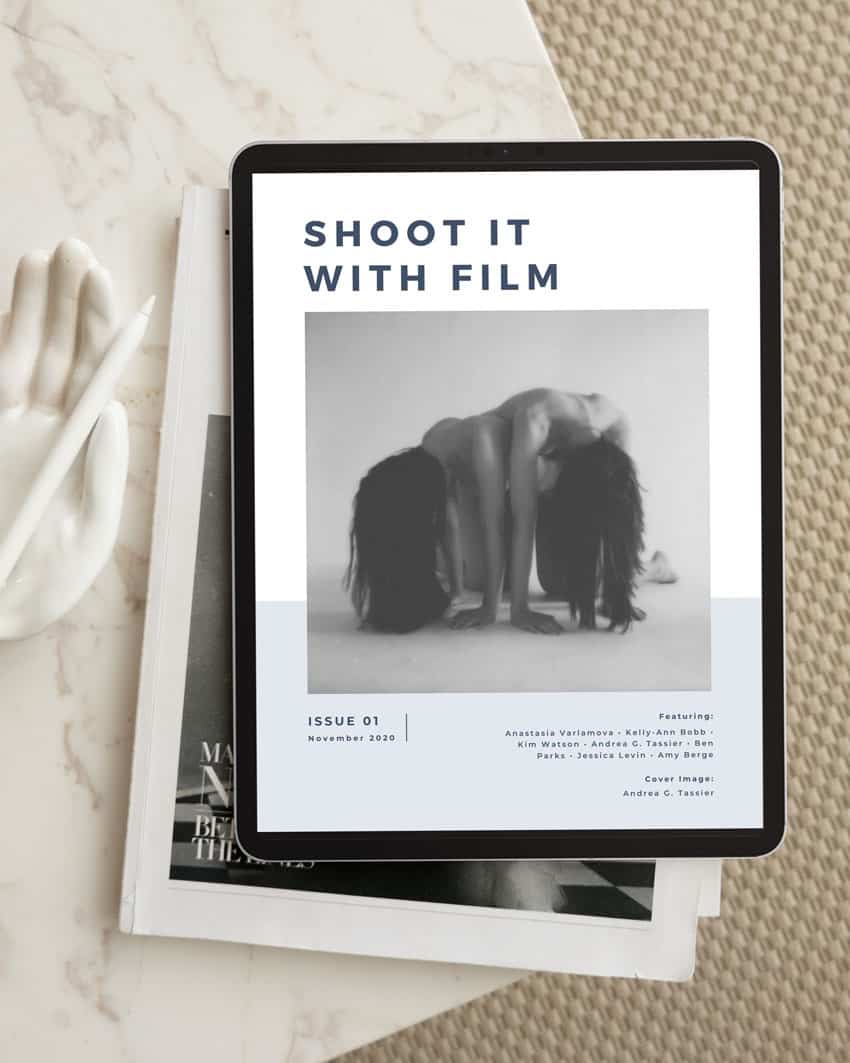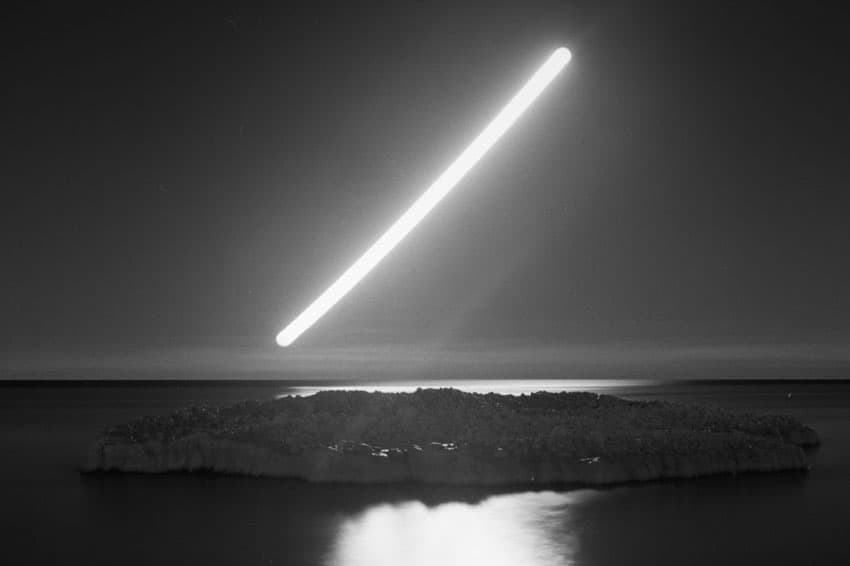
Written by James Baturin
I’ve been really drawn to more abstract and experimental forms of photography lately. I’ve experimented a lot with long exposures and intentional camera movement, trying to give my images a sense of nuance and mystery that I really love.
I’ve done some work with double exposures, but I’ve also seen photographers who push the concept even further, layering 10, 20, or even 50 multiple exposures of the same subject onto one image.
The resulting images captivated me, and so I set out to try it myself.



What is a Multiple Exposure?
A multiple exposure is essentially when you expose multiple images onto one frame of your film roll.
A lot of film cameras have a built in mechanism for multiple exposures, allowing you to take a shot and reset the shutter without actually advancing the film, and then taking another image over the same frame.
For a double exposure, after the second image is taken you would advance the film to the next frame. The concept for multiple exposures is the same, just with a lot more exposures.


What Will You Need?
Obviously, the first thing you’ll need is a camera that has the ability to take multiple exposures.
I used my Hasselblad 500 C/M for mine, which made the process of taking up to 30 exposures on one image pretty tedious and time consuming.
The only way to take a double exposure with the 500 C/M is to take an image, put the dark slide in, take the film back off, wind the film advance knob, put the film back back on, take out the dark slide, take your next shot, and repeat for as many exposures as needed.
Not all cameras are this complicated, but whatever the method, the camera needs to have a way of shooting multiple exposures.
In some cases, having ND filters available might help, as you are exposing the film to a lot of light by layering so many images.
I used a 3-stop ND filter for some of the images and no ND filter at all for others, and I got good results from both, so I don’t think they are strictly necessary. But I’ll talk more about that when I talk about my method.

Figuring Out My Settings for Shooting 20+ Multiple Exposures
Figuring out my settings for multiple exposures was the most daunting part of this process setting out.
How on earth do you calculate what your aperture and shutter speed should be when you are taking 10+ shots on one frame?
I scoured the internet for some kind of chart, or equation for calculating my settings, but didn’t find anything helpful. So I did what anyone who has no idea what they’re doing would do: I guessed.
And so in the next few sections, I’m going to share what I did, and why, and the results, with the caveat that it may take some trial and error for you when you set out to do this, as it did for me.

Choosing Your Subject and Composing Your Shot
The multiple exposure images I had seen and was inspired by were created by taking multiple exposures of the same subject, but from different perspectives moving around it.
The idea is to keep the framing of the subject relatively consistent in each exposure, creating a kind of impressionistic “form” of the subject itself, with the non essential background artifacts getting layered, obscured and gradually fading with each new exposure.
Any subject can be photographed like this, but subjects that stand “alone” and have space around which you can walk and take shots from different perspectives while maintaining a consistent distance from the subject are most effective.
I chose things like single trees in a park or statues and monuments in a city setting.

Test #1: 10 Exposures with a 3-Stop ND Filter
I chose a favorite tree of mine for my first attempt at this.
Since I knew I’d be exposing the film to a lot of light, I tried to err on the side of underexposure. I used a roll of Bergger Pancro 400, stopped my aperture up as high as it could go (f/32) with the fastest shutter speed (1/500th of a second), and threw on a 3-stop ND filter as well.
I composed the tree roughly in the center of the frame, took a shot (handheld), and then walked in a consistent circumference around the tree, taking another shot every few steps.
I took about 10 exposures of this tree, and the results were WOEFULLY underexposed (though, with some help from the digital darkroom I was able to pull an image out of it that I think is still kind of cool).
So from here, I knew that I had underestimated the amount of exposure the film could take, and set out to try again.

Test #2: 16-25 Exposures with No ND Filter
My second attempt was much better.
Knowing the film could take more light than I initially though, I ditched the 3-stop filter, and with the same settings as before and a roll of Ilford HP5 400, tried the same technique with a fountain and statue downtown, and another tree in a nearby park.
I did between 16 and 25 exposures for each of these, again taking each shot from a different perspective, but keeping the framing and distance from the subject as consistent as I could.
It was a relatively sunny day, so I was expecting my images to be overexposed with the number of exposures I did. To my surprise though, the exposures were all pretty good, and I got the look that I was going for.

Test #3: 20+ Exposures with ND Filters
I went out again the next day and did some more 20+ exposure shots of trees in a park, and decided to try the 3-stop ND filter again, but open up my aperture a bit and lower the shutter speed.
I tried 20+ exposures at f/11 and 1/125th of a second with the 3-stop filter, and, exposure wise, the results weren’t noticeably different from the shots I took without the filter.
If you’re looking to take shots like this with a lower f-stop then you’ll probably have to use an ND filter though.

Test #4: 30-40 Exposures without ND Filters
After successfully doing shots of about 25 exposures, I wanted to see if I could push the film even farther.
So I chose the giant Christmas tree in the courtyard in front of city hall as my subject, and, using the same settings as before (f/32 at 1/500th of a second, no filters), I wanted to see if I could get 30-40 exposures out of it.
It’s very hard to keep track of the number of exposures while you’re doing this, so I kind of lost track with this one. But it was definitely between 30 and 40, and again, the film was not overexposed.

Final Thoughts
My first big takeaway from my experience shooting multiple exposures was that I absolutely love the effect it creates.
The resulting impressionistic form of the subject is like something out of a dream or a memory, evoking mood and mystery.
I love techniques like these because they allow us to see the world in a way we aren’t capable of, given our experience of it through a singular perspective.
On a more practical level, I learned that film is SO resilient when it comes to resisting overexposure.
I think the reciprocity failure of the film helps with this a lot, and makes me think that a technique like this would be much harder to achieve with a digital camera.
Despite getting some images that I’m really happy with, I feel like I’ve only scratched the surface with this technique overall, and I’m really excited to see how far I can push the film with multiple exposures.
Can I get 50 exposures? 75? 100+? The results I got here make me excited to find out!
Thank you so much, James! James is a regular contributor here at Shoot It With Film, and you can check out his other articles here, including Using Intentional Camera Movement to Enhance Your Film Photography and Understanding Reciprocity Failure in Film Photography.
You can also check out James’s work on Instagram.
Leave any questions you have about shooting multiple exposures on film below in the comments!








Blog Comments
Ian
December 17, 2021 at 12:18 pm
They sure look great, I’ve been meaning to do this lately. I’m guessing it was overcast in these shots and so you were taking at 0 to 2 stops under what the meter reading would have been?
Caroline
December 17, 2021 at 9:30 pm
Let’s give credit where credit is due: @revisionistphotography has been pioneering this technique for a year now, both on black and white film and color film. He has done shots with 50-60 exposures. Check out his beautiful work on Instagram and at https://www.indiephotography.org/ .
Dimitri
January 18, 2022 at 12:47 pm
This technique has been in use for a very long time and has been revisited many times. In the late 80’s, early 90’s, it was commonly included in many photography magazines. However, it was more of a “trick” technique and less on an artistic process, so kudos to @revisionistphotography for the beautiful implementation of the technique.
Rich
December 21, 2021 at 4:59 pm
Interesting. My wife did something like that years ago with her Pentax K-1000. We were in NYC (25 miles from home) and the film was not fully in the takeup spool. Oops! _I _thought the resultant photo was great. She disagreed. 😢
Good shots!
–Rich
Jens Rueckert
August 8, 2024 at 4:11 am
Hi!
I just came across this great article! Wonderful photos and great to follow your journey.
Actually I was refreshing my knowledge about multiple exposures with a Hasselblad 500c/m, as my brain ran around with that while I tried to find some sleep last night. At least I’ve found the confirmation of my thoughts. I used this technique with many other 35mm SLR cameras where it always was quite easy. Once I did it without purpose with my leica m6, on a full roll of film, all negatives were double exposed and even exactly one on the other. Had I done this on purpose … failure I guess(?).
As we are going on a road trip in a few days, visiting Germany’s eastern part, as long as we still are “allowed” to do so (with the political situation there being a disgrace for many years now and getting worse…) it is my idea to dedicate one hasselblad film magazine to double/multi exposures only.
Always good light!
Regards,
Jens